Kachchh villagers on vigil to save Sangnara forest from a windmill project
A tropical thorn forest in Kachchh district of Gujarat is under threat from windmills being erected by cutting down hundreds of trees, complain villagers. For the past two months, villagers are on a vigil to stop entry of equipment for the wind energy project. Yesterday, August 6, they launched a major protest to save their forest.

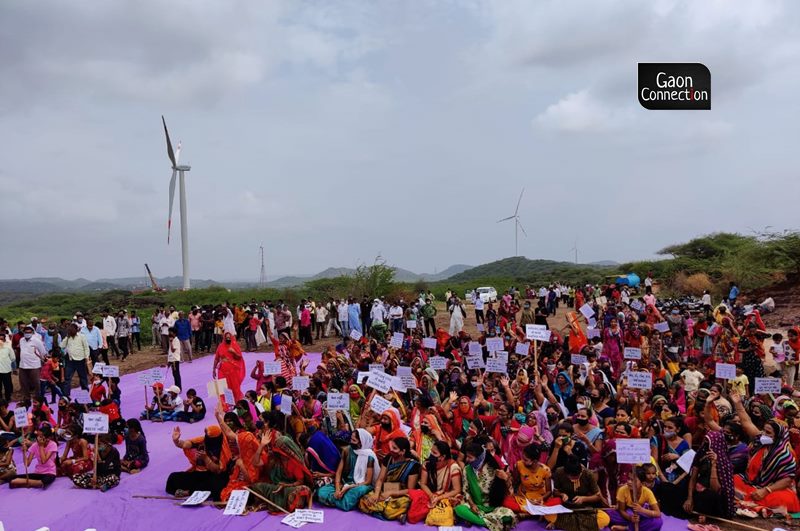
At least 1,000 villagers gathered in protest against the erection of the windmills. All photos: By arrangement
Wearing their traditional attire of bright and colourful chaniya-choli, a large number of women from villages in Kachchh district of Gujarat, gathered on the road leading to the Sangnara forest yesterday on August 6. “Jungle bachao” (save trees) read their placards as they marched to stop the construction of pawan chakki (wind mill) in their forest and on their common grazing land.
At least 1,000 villagers gathered in protest against the erection of the windmills that are expected to lead to the chopping down of hundreds of trees in the desert district of Gujarat.
“The pawan chakki (windmill) is being set up on a green area. Yeh hamari achi meethi jameen hai (the land is fertile and green),” 30-year-old Shilpa Limbani, a resident of Sangnara village, told Gaon Connection. She was part of the protest held yesterday. “We take our cows and camels for grazing in the forest. If this windmill is constructed here, we will lose the forest,” she added.
“These windmills should be set up in banjar (barren) lands but this one is being set up in gauchar jameen (grazing land). There are many banjar plots where the pawan chakki could be set up,” said the 30-year-old.

The Sangnara forest is a 500 square kilometre tropical thorn forest in Kachchh. It is home to a huge diversity of endangered flora and fauna. This includes chinkara, wolf, caracal, ratel, hyena, desert cat, Indian fox, spiny tailed lizard, desert monitor, white-naped tit, vultures, and many more. It is believed that the local communities have maintained and protected this forest for the past 500 years.
However, in the past six years, a number of windmills have come up in the area for the generation of ‘green’ power. Villagers are not against these windmills or the renewable energy projects, but claim they do not want such projects at the cost of their forest or their grazing land.
Also Read: ‘Green’ energy projects threaten to wipe off ancient ‘orans’ in Jaisalmer, Rajasthan
“Villagers here understand how important it is to save these trees. They want light (electricity) but not at the cost of trees,” Aruna, secretary of Kachchh Mahila Vikas Sangathan, a non-profit working for women rights, told Gaon Connection. She too participated in the protest yesterday. “A majority of women were part of the protest today [August 6]. Generally their voice is not heard, but today they stepped out of their homes to save their forest and their gauchar jameen,” said Aruna.
Most of the protesters were farmers, maldharis (tribal herdsmen) and daily wage labourers. They were joined by several non-profit organisations including Sahjeevan Trust, Bali Vikas trust, Maldhari Sangathan, Sarpanch Sangathan, Kachchh Mahila Vikas Sangathan, and Let India Breathe.
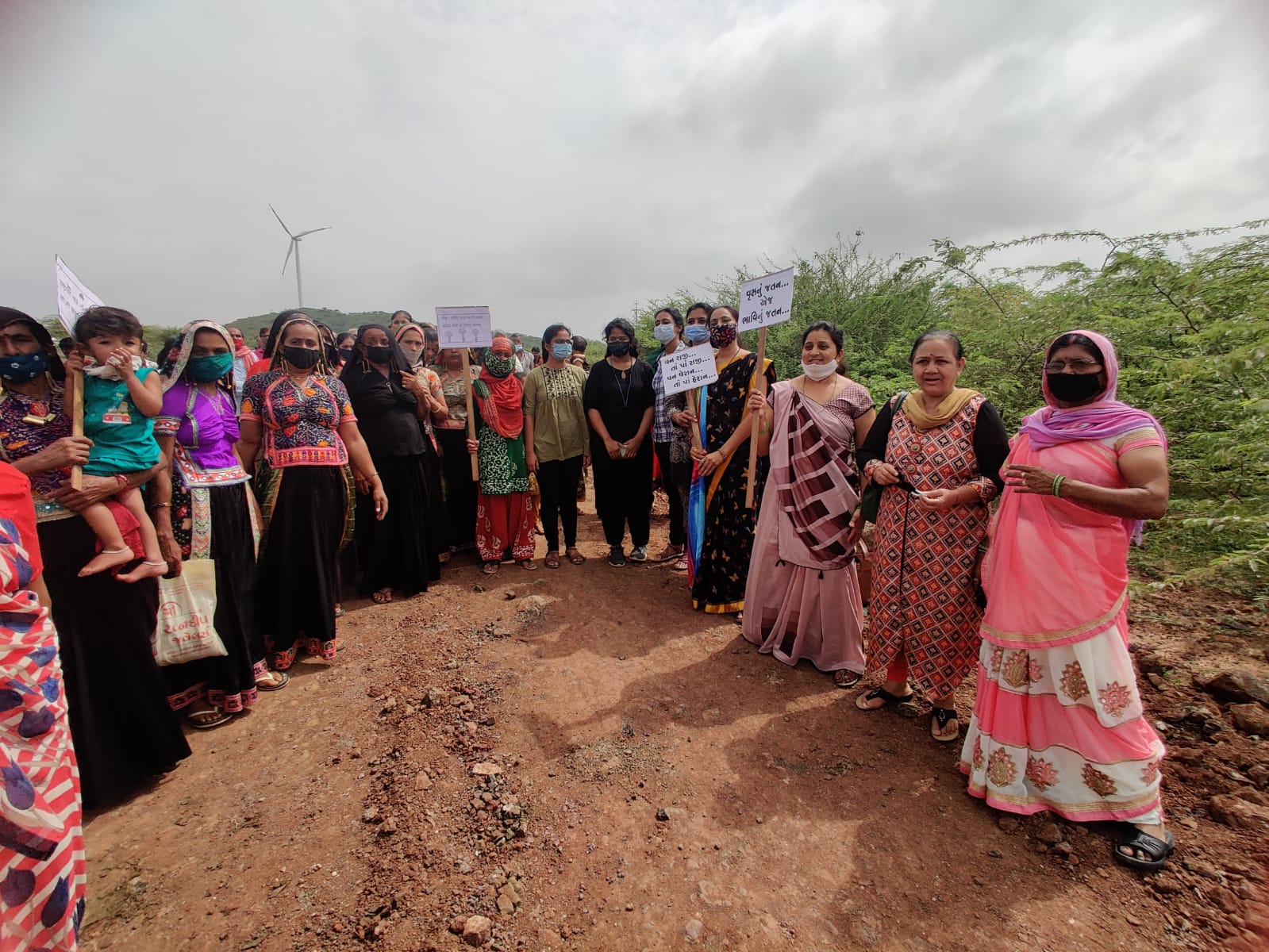
How green is the ‘green’ power
According to the National Institute of Wind Energy (NIWE), the total wind energy potential in India is 302 gigawatt (GW) at a 100-meter hub height. Of this, more than 95 per cent of commercially exploitable resources are located in seven states — Andhra Pradesh, Gujarat, Karnataka, Madhya Pradesh, Maharashtra, Rajasthan and Tamil Nadu.
Gujarat’s total wind power generation capacity is 7,542 megawatt (MW), which is the second-highest installed capacity in India after Tamil Nadu (9,304MW).
The first wind energy turbine was put up in Sangnara nearly five-six years ago in 2015-2016. Since then a number of windmills have come up in the area. These windmills, allege local villagers, have destroyed hundreds of trees, flattening hills to create access for the machinery, fans and transmission cables. Birds and wildlife have deserted because of the consistent noise of the fans and machinery, say local people.
A 2019 study titled ‘Avian Mortalities from Two Wind Farms at Kutch, Gujarat and Davangere, Karnataka, India’ by Mumbai-based Bombay Natural History Society and Coimbatore-based Salim Ali Centre for Ornithology and Natural History showed that wind turbines were posing a threat to lives of birds in their vicinity. Birds colliding with turbine blades were dying.
As part of the study, 59 turbines of the Kachchh wind farms were studied. It found 47 carcasses of birds belonging to 11 species in Samakhiali, Kachchh in the radius of 130 metres from the turbines. The researchers claimed these were threatened species.
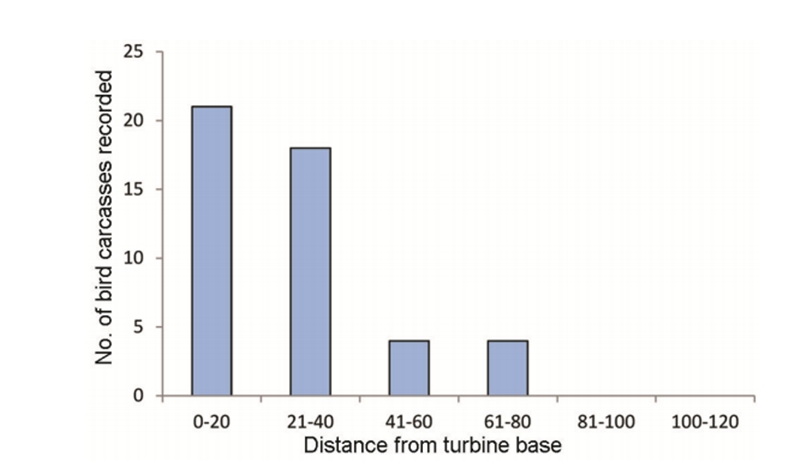
The joint study suggested careful selection of wind farm sites which should be located away from bird habitations.
Long battle
For the past six years, villagers in Kachchh are fighting against the setting up of windmills at controversial locations.
In 2015, a windmill manufacturing company was allocated 11 sites in the Sangnara village to set up windmills for power generation, of which six have been completed. “Earlier many trees were cut because to carry windmill equipment and machinery, the area has to be cleared for the passage of trailers and trucks,” Nitin Limbani, a resident of Sangnara village, told Gaon Connection. At least three to four acres (approx. 1.5 hectare) of land is required for a windmill that is why they cut trees in the vicinity, he added.
Also Read: “What’s the point of development when our kids are going to die because of pollution?”
Two months back, on June 18, villagers witnessed a renewed attempt by the windmill manufacturing company to put up two more windmills in the forest, which led to renewed protests in the area.
For the past two months, at least 50-60 villagers, including women and youth, have been regularly lingering near the village borders to keep a check on the entry of the windmill trucks.
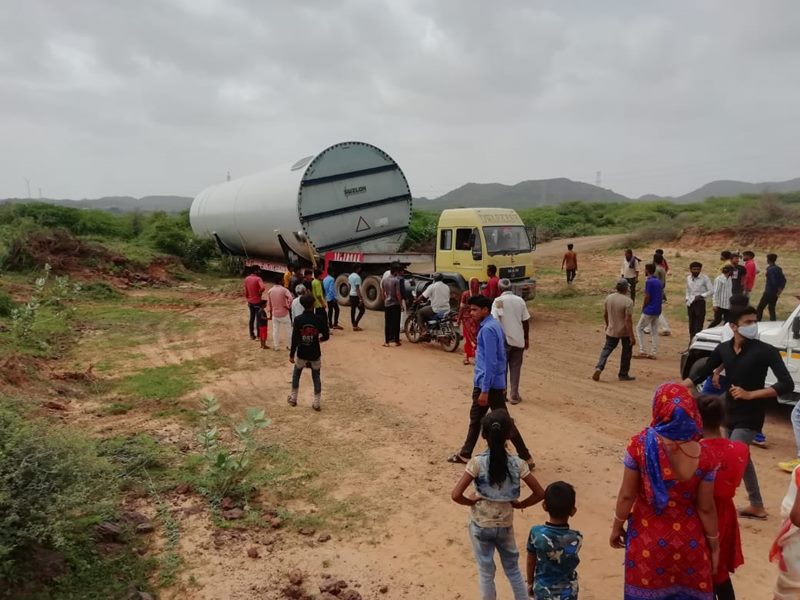
“We will not let the windmill company come here. We are guarding our village boundary,” 55-year-old Shankarlal Gopalbhai Limbani, resident of Sangnara, told Gaon Connection. He is leading the protest to save the forest and the grazing land. “Taking tiffins, these villagers leave for the border every morning and stay there all day long to ensure windmill equipment does not enter the village,” he added.
“We will not let them come and destroy our forests,” the 55-year-old said emphatically.
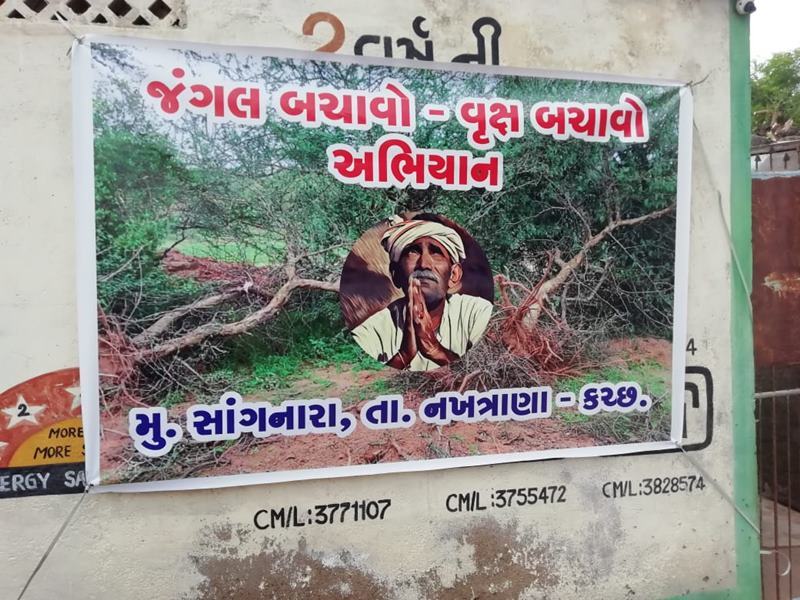
During the protests yesterday, villagers blocked the roads to the Sangnara village. “Today [August 6] also they (representatives of the windmill manufacturing company) came. Their trucks are at the outskirts of the village. We blocked the road. If they come again, more and more villagers from across Kachchh will join in to stop the destruction of our ancestral forest,” said Limbani.
Also Read: Treeman: Bhaiyaram Yadav of Chitrakoot has created a forest with more than 40,000 trees
Meanwhile, the matter is already before the National Green Tribunal (NGT). In 2019, the villagers had moved the NGT to stop construction of windmills. “Because of the COVID pandemic, there was no response so far but our next hearing is due next month. We will not let our forest be destroyed,” Shankarlal said.
Gaon Connection contacted District Magistrate Praveena DK’s office but she was unavailable to comment. The story would be updated once a response is received from the district magistrate and the Gujarat Energy Development Agency.


